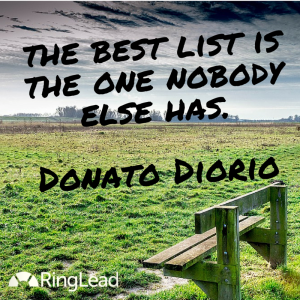Employees engaging in charitable giving score a win for everyone involved — the charitable cause gets donations, the employee donor gets satisfaction, and your business gets boosted morale and positive attention.
There are plenty of reasons to encourage charitable giving, but what’s the best way to do it?
There are so many ways to encourage employees to give that businesses can feel the pressure when coming up with a plan. If you’re not sure how to start, take these five simple steps to encourage a healthy environment of charitable giving at your business:
- Institute an employee giving program.
- Educate your team about charitable giving.
- Highlight simple giving channels.
- Give your time as a team.
- Recognize charitable employees.
Ready to jump-start your business’s charitable giving culture? Let’s get started.
1. Institute an employee giving program.
Don’t underestimate how important an established employee giving program is. By instituting a program within your business, you show employees that you value their time.
Think about it: Encouraging employees to participate in charitable giving programs is one thing, but providing in-house opportunities to do to makes it easier.
Plus, when the program is companywide, you establish a sense of corporate social responsibility. When everyone works together, you get more done than everyone could on their own!
When it comes to setting up your employee giving program, you should know your options. The two main types of corporate philanthropy are:
- Matching gifts
- Volunteer grants
When you institute a matching gifts program, you promise to contribute the same amount to the same eligible organizations that your employees do. This is one of the most straightforward ways to show support for contributing employees and the charitable organization at the same time.
Consider what qualifications to add to a matching gifts program. Some options:
- Minimum or maximum donation amount: Many businesses only match donations above or below a certain amount. This strategy encourages higher giving amounts without bankrupting your business.
- Matching ratios: Maybe you will match gifts exactly, in a 1:1 ratio. Some programs, though, set a 2:1 or a .5:1 ratio. Decide on a matching ratio that makes sense for your finances.
- Whose gifts can be matched: Depending on your situation, you might decide to only match full-time employees’ charitable donations. Consider matching part-time employees’ or retirees’ donations too, if possible.
Setting clear conditions at the beginning helps you manage your program as it picks up speed.
Volunteer grants are another kind of promise. You pledge to donate a certain amount of money for each hour or a set number of hours an employee spends volunteering with a community organization. Particularly if your employees are already volunteering or have an interest, instituting this method of giving could pay off.
Not many people know about volunteer grants, though they may be more familiar with matching gifts. You should account for this gap in knowledge when setting up your program, building education into your plan. Read on to the next section to learn how!
2. Educate your team about corporate giving.
Employees can’t participate in programs they don’t know anything about. It’s your job to market corporate giving opportunities in whichever way makes the most sense to your business, either in person or in online communication.
Make sure your employees know how important these programs are to the business. Consider highlighting:
- The importance of giving back to the community
- Tax benefits from charitable giving
- Positive impacts on corporate culture
Once employees understand the importance of charitable giving, they need to know exactly what to do to participate. Don’t unintentionally set roadblocks in the way of those who want to give. Unclear instructions make it hard for employees to actually participate, and obscure objectives for programs won’t encourage anyone to join.
Clarity when communicating guidelines and program goals will make it easy for employees to give.
You can’t expect your employees to rush to enlist in a corporate giving program the first time you mention it. They have a lot going on, including their everyday work. So give them time to think about it, but follow up whenever you can, employing a combination of these follow-up strategies:
- Team meetings: Don’t underestimate the impact of an in-person reminder! Talk about your charitable giving program when everyone is physically in a meeting together.
- Company-wide emails: Emails sent to the entire company must be about something important. A mass email about your program accomplishes dual goals: reminding everyone about the program and establishing it as a high priority.
- Flyers: Do you have a bulletin board somewhere in your office? Print out some visually interesting or tear-away flyers about your program and leave them up.
No matter how you do it, give the employee giving program plenty of repeated attention via a number of different mediums. The more you talk about it, the more importance you place on it in everyone’s minds.
3. Highlight simple giving channels.
Your employees might be intimidated by the program you set up. By taking it up as an awesome opportunity, you could accidentally make it seem like too big of a commitment or too complicated for them to participate in. They might decide not to sign up even if they really care about charitable giving.
The best thing you can do to overcome these barriers is to actually show employees how easy it is to give.
In your communications, whether over email or in person, explain the ways in which you have made giving easy. You can highlight all the giving methods available to them and explain concisely how they work.
Make sure you choose to implement the best option for your business. You’ve got plenty of options, such as:
- Online giving forms
- Text-to-give
- Email buttons
It may be helpful for potential program participants to see the donation process in action.
Consider asking a corporate giving lead or manager to demonstrate on the big screen during a meeting. You could even record an instructional video tutorial to send out in the next internal email blast.
A side benefit of high-level employees personally presenting the giving channels is the credibility their participation will bring to the program overall. Showing that everyone is on board can never hurt a program’s popularity!
4. Give your time as a team.
Nothing promotes a shared sense of corporate responsibility like seeing everyone volunteering their time and effort together. Getting people together from every sector and level of the company unites everyone around a shared goal — and for a good cause, too!
Giving as a team doesn’t have to just mean enrolling everyone in the same charitable giving program. You can also get everyone out of the office to volunteer in person together in the community.
When you do leave the office for a volunteer event, consider:
- The atmosphere of where you’re going. Have you brought lunch for employees? Will you play music? Are you dividing into teams to encourage friendly competition?
- Any potential cost associated with the trip. Many volunteer opportunities don’t cost anything but time, but if there is a registration fee, how are you handling it? What about gas or public transportation to get there?
- How you’ll debrief afterward. Are you going back to the office afterward, or are you going home? Will you encourage volunteers to share stories or pictures of their experience on social media, in a large meeting, or with their teams?
If in-person group volunteering proves to be popular with your employees, you might consider expanding that aspect of your charitable giving program. For instance, you could establish a team volunteer grant, which award more money per each hour of work if employees volunteer in a team instead of by themselves.
Another way to get everyone together if volunteering isn’t an option is to join a peer-to-peer campaign. Peer-to-peer, or P2P, campaigns fundraise through each individual participant gathering sponsorships from their own social circles on their behalf. Charity races commonly operate on this model.
Peer-to-peer campaigns don’t depend on everyone being in the same place at the same time, but they do require teamwork and dedication. And beyond encouraging charitable giving, peer-to-peer events can also introduce friendly competition!
The goal of giving is to raise funds and awareness for a good cause. And if your team gets stronger along the way, then that can’t hurt, either.
5. Recognize charitable employees.
Once they’ve given the first time, how do you ensure that employees will continue to invest their resources in the program, maybe even in an increased capacity?
To encourage continued participation, recognize those employees who go above and beyond expectations. There are many ways to acknowledge those who give:
- A simple shout out in a company-wide meeting or email
- Gift cards or flowers (or more creative prizes)
- PTO for a three-day weekend trip
- Their name added to a “Most Charitable” plaque on the wall
It doesn’t take much to show your charitable employees how much you appreciate their contributions, but you get a lot back in return.
You might even consider starting a leaderboard to make sure the most charitable contributors are recognized outside meetings and emails.
Not only will those employees get a little extra encouragement from being acknowledged publicly, their team members will also see the praise their charitable coworkers receive. That incentive can inspire them to try to make it to the top sometime soon.
However you decide to do it, make an effort to acknowledge employees who stand out in your giving program. Recognition for charity can go a long way.
Conclusion: Energizing your business toward charitable giving begins with consideration for your employees. By offering easy in-house giving options and providing clear guidelines for your team, you set everyone up for success. Once everyone’s on board, encouragement and friendly competition will help keep the success going, as long as you facilitate it.
A successful charitable giving program is built on the leadership team’s dedication to corporate responsibility. Your employees will be able to tell you care, which will encourage them to care, too!
Digital & Social Articles on Business 2 Community(41)







